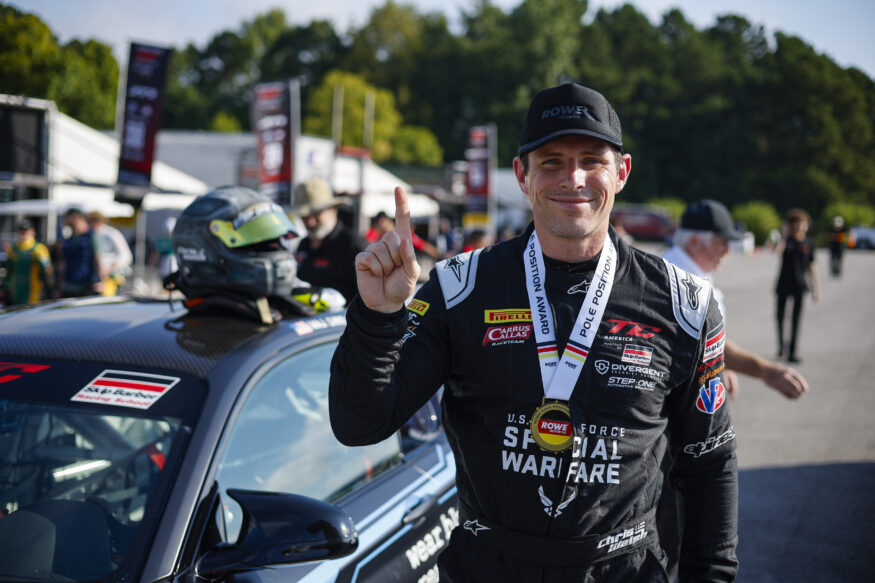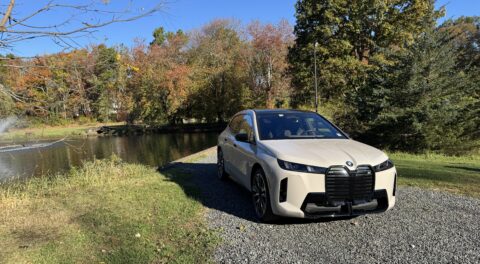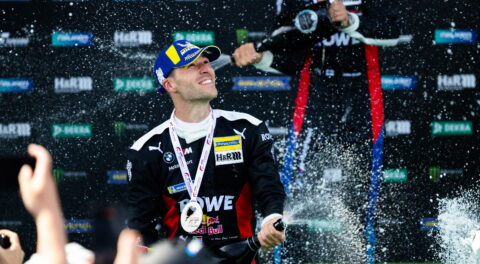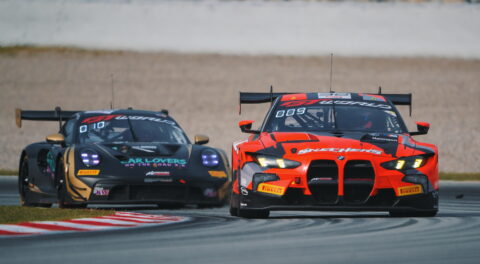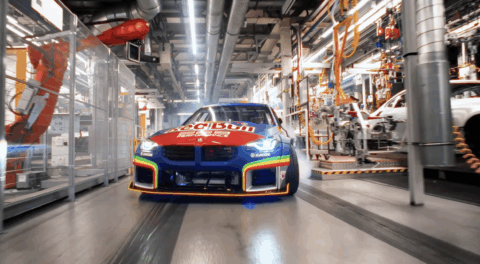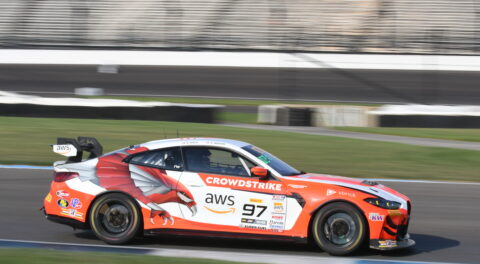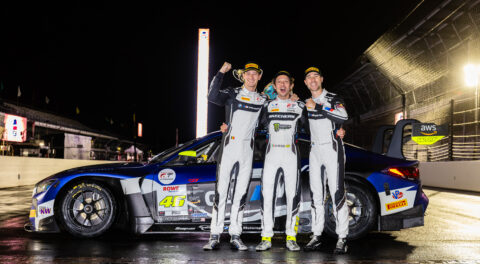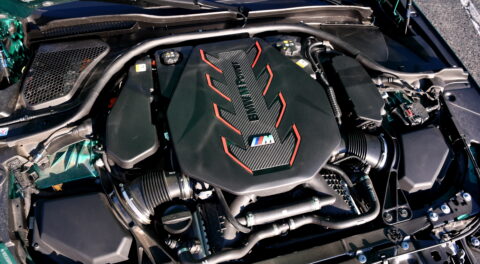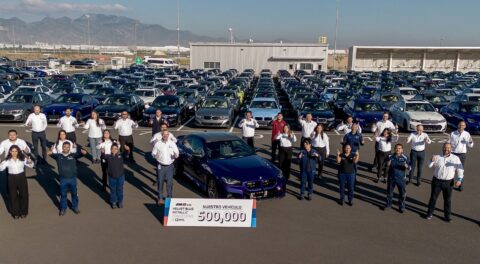Chris Walsh had a dominant season in the SRO TC America series driving a Carrus Callas Raceteam M2 CS Racing. On his way to the TCX class championship, Walsh won eight out of fourteen races, and in the six races he didn’t win he finished second. Walsh also drove with Carrus Callas Raceteam owner Nicholas Shanny in several GT4 America races this year in an M4 GT4, with five Am class podium finishes. Walsh is also an officer in the Air Force and had a stint on the US Olympic Bobsled team.
BimmerLife: How did all this get started?
Chris Walsh: My racing journey is not traditional. I didn’t get started in karting or any of that. I grew up playing Gran Turismo and F1 games and always loved the idea of racing but never had access to it. When I joined the military, the job I do in Special Operations required us to ride dirt bikes. The first time I cracked the throttle on a dirt bike, I thought this is awesome – I need to get a motorcycle! I got a street bike, a Ducati, and started racing bikes first, but then took a break from that because you can get injured pretty easily when you make a mistake on a motorcycle.
In the midst of doing bobsled with the US Olympic team, I had a lot of free time in the summers, and I got back into sim racing in a more serious manner on iRacing. I started racing (real racing) in the World Racing League (WRL), and one of the WRL owners had the M2 CS Racing (M2 CSR) that I’m racing this year. It was my first opportunity, so I scraped together the money and, did my first pro event at VIR in 2021 and was on the podium in my first race.
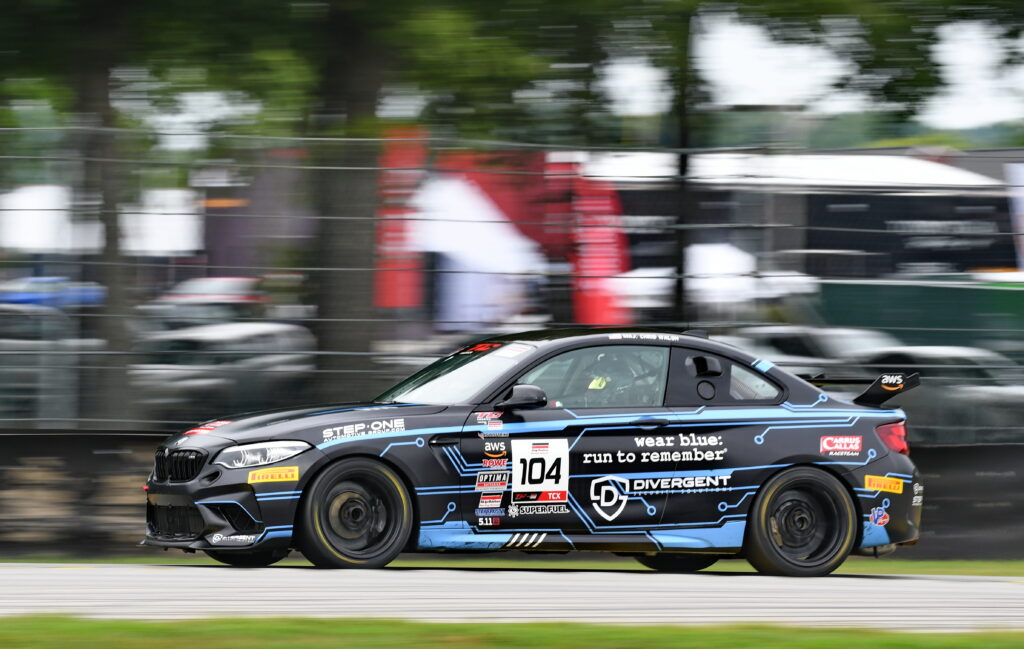
Walsh won eight races in the M2 CS Racing this year.
BL: How did you end up on the US Bobsled team?
CW: I was a college athlete and just tried out. I was always interested in pursuing the Olympics, and that was one of the few sports where you could just take a combine and see if you were good enough. I was able to get into the team and compete at the 2022 Olympic trials in Lake Placid, New York. I didn’t make the team that went to the Olympics, unfortunately, but it was a really good experience.
BL: How did the skills you learned in motorcycle racing and bobsled translate over into car racing?
CW: I think it’s everything I’ve done. In Special Operations in the military, I’ve been to Iraq and Syria and have done other appointments in the Middle East. Whether you’re planning a mission in the military or competing in a race, you need to put a lot of energy and effort into the prep ahead of time, so when you get there, you don’t face as many surprises as you think. You have a game plan and a backup plan and know exactly what you need to do. I think the skills and even disappointments that come with those efforts have taught me how to refine that and use that in racing. Training and competing at a high level also helped to build the mental strength to help deal with the pressure that is part of pro racing.
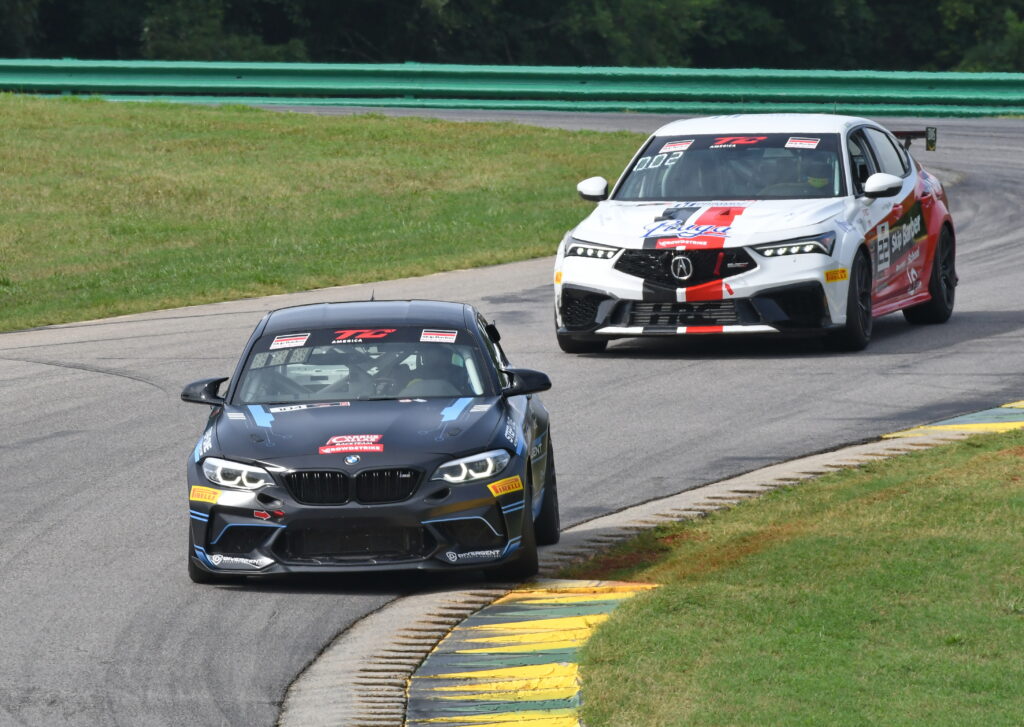
Walsh out in front at his favorite track, VIR.
BL: Can you give more details on your current role in the Air Force?
CW: Both of my parents were enlisted in the Air Force, which is where they met, and I was born in the Philippines when they were stationed there. I’ve been in the military for fifteen years and I’m in a position called Special Tactics. I’m a Special Tactics officer, which is the Air Force equivalent of the Navy Seals. The Air Force has its own ground-based special operations force, and we do the air-to-ground integration that happens anywhere around the globe. If the Air Force needs to put aircraft into unique places on dirt landing strips, we’re the ones that figure out if it can actually be done. We also do controlled air strikes as a team, and we’ve done that for a long time in Afghanistan and Iraq. We have humanitarian rescue missions that we support as well.
BL: That role seems very specialized. How did you get into that type of role?
CW: I started out as an aircraft maintenance officer on KC-135 Tankers (an aerial refueling tanker aircraft). It’s an application process (for Special Tactics), so you have to try out for it. It’s a grueling two-year pipeline after that to get trained and get all the qualifications that you need. I think it has like an 80% washout rate for people that try out, so it’s very selective. It teaches you a lot of good life lessons and interesting skill sets.
BL: You’ve had quite a successful season in the M2 this year.
CW: It’s been a dream season. We knew when we came out and won the first two races that we had the pace and could fight at the front. I really got in tune with the car from there. The gap has closed as the season has gone on with the balance of performance adjustments they’ve made to the M2 CSR that brought us down (for example, SRO required an additional 70 kilos of weight in the car for the Indy finale). The opportunity also came to drive in an M4 GT4 in GT4 America at mid-season, and I took to the car pretty well but am still learning.
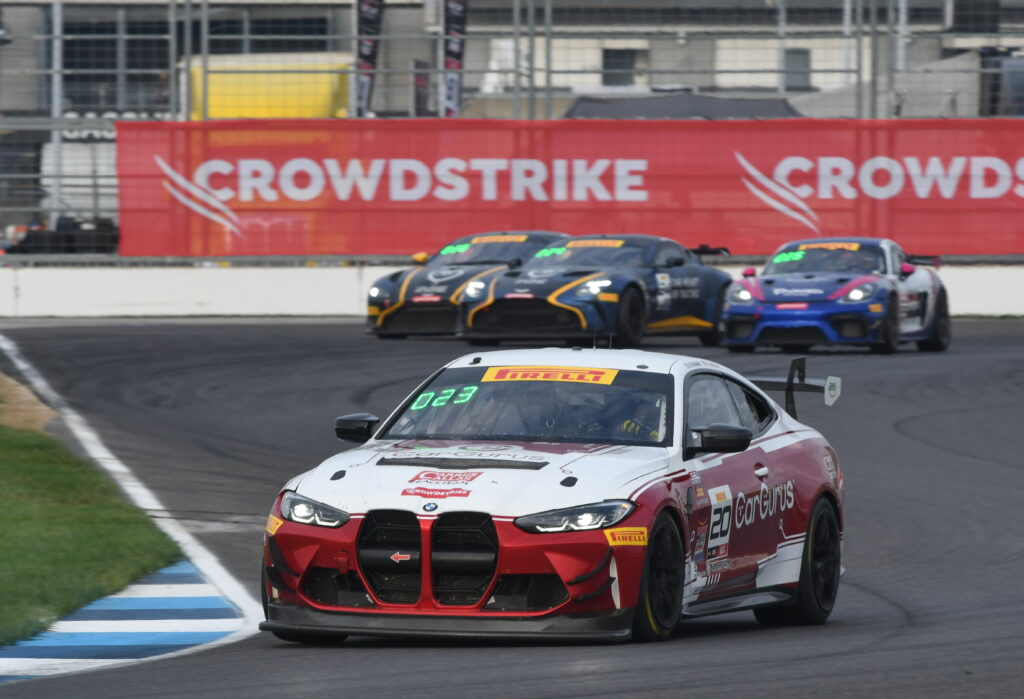
Walsh and Nicholas Shanny had five podium finishes in the M4 GT4.
BL: How are the M2 CSR and M4 GT4 different?
CW: The M2 and M4 road car counterparts are very similar, but the M4 GT4 is a very different platform than the M2 CSR. The M4 GT4 is more capable than the M2 CSR in every way. The M2 CSR has boosted brakes that are very similar to the road car and have a very different feeling than the M4 GT4 which has dual master cylinders and a very stiff brake pedal, so you have to adjust your braking technique between the two cars. The power, the dampers and the amount of aero the M4 GT4 has are also drastically different than the M2 CSR. The principals of driving are the same, but you can get a lot more out of the M4 GT4.
BL: What kind of work do you do with nonprofit organizations that tie into racing?
CW: I got involved with a group called wear blue: run to remember back in 2016 when I was stationed in Washington state. The founder of that group is a woman named Lisa Hallett. She lost her husband in Afghanistan in 2009 and had three little kids at the time. That deployment had a very large number of individuals get killed in their unit, so there was a large pool of families that were struggling with the loss. Lisa started a running group as a support network for those families and it grew into a nationwide organization. They also have programs for gold star athletes. When I got the opportunity to race professionally, we thought it was a great opportunity to bring awareness to the organization.
BL: What are your goals as a race car driver?
CW: My long-term goals are lofty, but I’d like to get into prototype racing. Logically, I want to progress up the ladder. I want to do another season of GT4 and put together a program with Carrus Callus. From there, I would really like to get into the GT3 world.
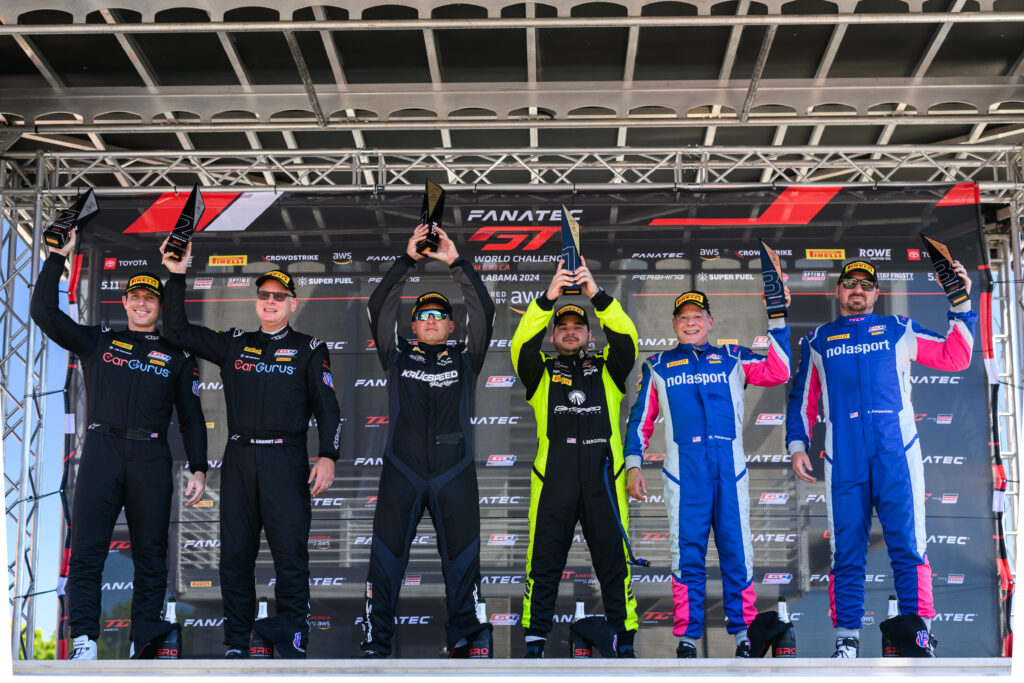
Walsh (far left) and Nicholas Shanny (next to Walsh) on the GT4 America podium at Barber Motorsports Park.
BL: What are your favorite tracks in North America?
CW: I have three that are very close together for me. VIR is probably at the top of my list. I like tracks that have high commitment and VIR is so fast. My first real race at Road America was this year and I fell in love with it. It’s awesome and the community there is cool. I also really like Road Atlanta.
—David Haueter
[Action photos by David Haueter, podium photos courtesy SRO]

